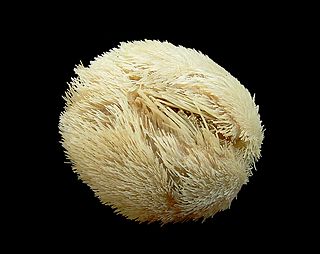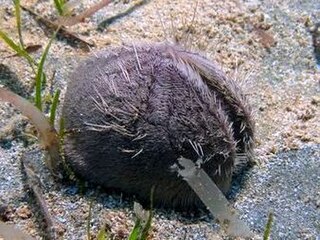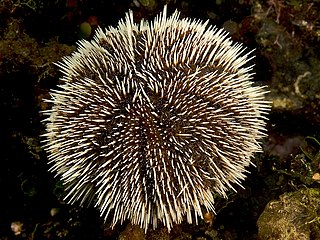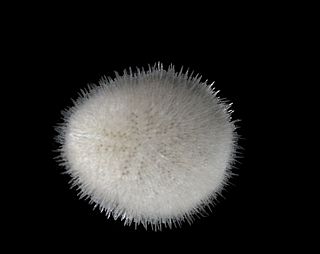
The subclass Euechinoidea includes almost all living species of sea urchin, with fossil forms going back as far as the Triassic.

The Aspidodiadematidae are a family of sea urchins.

The Diadematidae are a family of sea urchins. Their tests are either rigid or flexible and their spines are long and hollow.

Cidaris is a genus of pencil sea urchins.

Loveniidae is a family of heart urchins in the order Spatangoida.

Echinocardium is a genus of sea urchins of the family Loveniidae, known as heart urchins. The name is derived from the Greek ἐχῖνος and καρδία.

Coelopleurus is an extant genus of echinoids with fossil records dating back to the Eocene, with remains found in Europe and North America.
Cassiduloida is an order of sea urchins. The group was extremely diverse with many families and species during the Mesozoic, but today, only seven extant species remain.

The heart urchins or Spatangoida are an order of sea urchins.

The Echinacea are a superorder of sea urchins. They are distinguished by the presence of a rigid test, with ten buccal plates around the mouth, and solid spines. Unlike some other sea urchins, they also possess gills. The group is a large one, with species found worldwide.

Cidaridae is a family of sea urchins in the order Cidaroida.

Tripneustes is a genus of sea urchins belonging to the family Toxopneustidae.

Eucidaris is a genus of cidaroid sea urchins known as slate pencil urchins. They are characterised by a moderately thick test, a usually monocyclic apical disc, perforate and non-crenulate tubercles and nearly straight ambulacra with horizontal pore pairs. The primary spines are few and widely spaced, stout with blunt flat tips and beaded ornamentation and the secondary spines are short and apressed. They originated in the Miocene and extant members of the genus are found in the tropical Indo-Pacific Ocean, East Pacific, Atlantic Ocean and Caribbean Sea.

Heliocidaris is a genus of sea urchins, part of the family Echinometridae.

Irregularia is an extant infraclass of sea urchins that first appeared in the Lower Jurassic.

The Neognathostomata are a superorder of sea urchins.

The infraclassis Carinacea includes most living species of regular sea urchin, and fossil forms going back as far as the Triassic.

Temnopleuridae is a family of sea urchins in the infraorder Temnopleuridea.

The pourtalesiids (Pourtalesiidae) are a family of irregular sea urchins that live in the deep sea. They are secondarily bilateral-symmetrical and like other representatives of the taxon Holasteroida they lack the lantern of Aristotle, which is typical for many other sea urchins. The genus Pourtalesia was named after Louis-François de Pourtalès who first collected these animals while dredging at a depth of 600 m. The family is known already from the Upper Cretaceous (Maastrichtian) and is distributed worldwide.

Goniocidaris is a genus of sea urchins (Echinoidea) in the family Cidaridae and typical of the subfamily Goniocidarinae. Extant species are mostly found in Indo-Pacific seas, often living at depth.
















